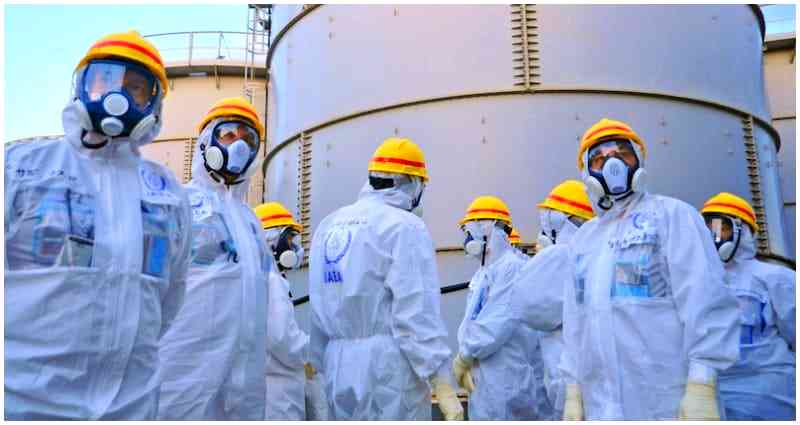Japan May Have to Dump Radioactive Fukushima Water Into the Pacific Ocean


By Ryan General
September 11, 2019
A Japanese official has just publicly announced that they might end up dumping radioactive water from the destroyed Fukushima nuclear power plant into the Pacific Ocean.
The disturbing pronouncement came from the environment minister of Japan himself, Yoshiaki Harada. According to Harada, Tokyo Electric (Tepco), the firm tasked with the cleanup is running out of room to store the liquid, MailOnline reports.
On March 11, 2011, a massive earthquake caused three reactors at the Fukushima Daiichi nuclear plant to meltdown, releasing radiation into the air and forcing the evacuation of more than 160,000 people from the area. Tepco has had to continually use fresh water to cool the reactors over the last eight years.
Through the process, the company has so far collected over 1 million metric tons of contaminated water stored in 900 tanks on the grounds at Daiichi, reports CNET.
Harada says there would be no space left to contain the hazardous water by 2022.
“The only option will be to drain it into the sea and dilute it,” Harada was quoted as saying during a press briefing. “The whole of the government will discuss this, but I would like to offer my simple opinion.”
Japan has yet to decide on the issue as the government is reportedly awaiting a report from an expert panel.
In a separate media briefing, Japan’s Chief Cabinet Secretary Yoshihide Suga has distanced the government from Harada’s comments, describing it as “his personal opinion.”
Pushing through with the environment minister’s “simple opinion” could potentially cause tension in the Pacific region.
Just last month, South Korea summoned a senior Japanese embassy official to explain how Japan is hoping to address the Fukushima water situation.
In a statement, South Korea’s foreign ministry shared that it advised Japan “to take a wise and prudent decision on the issue.”
It should be noted that nuclear plants near coastlines usually dump water that contains tritium into the water as it is considered to be safe in small amounts.
Tepco has reportedly been trying to remove the contaminants from the water. The firm claimed that it has so far managed to remove 62 out of the 63 radioactive elements out. Tritium has proven difficult to remove because it bonds to water molecules.
However, Tepco admitted last year that the water that needs to be disposed of contained contaminants beside tritium.
Greenpeace has been urging Tepco to keep storing the water and continue developing water processing technology that could remove the radioactive elements.
“The decision not to develop water processing technology that could remove radioactive tritium was motivated by short term cost-cutting not protection of the Pacific ocean environment or the health and livelihoods of communities along the Fukushima coast,” said Kazue Suzuki, Energy Campaigner at Greenpeace Japan.
“We have raised the water crisis with the UN International Maritime Organization and firmly stand with local communities, especially fisheries, who are strongly opposed to any plans to discharge contaminated water into their fishing grounds.”
Featured Image via Flickr / IAEA Imagebank (CC BY-SA 2.0)
Share this Article
Share this Article